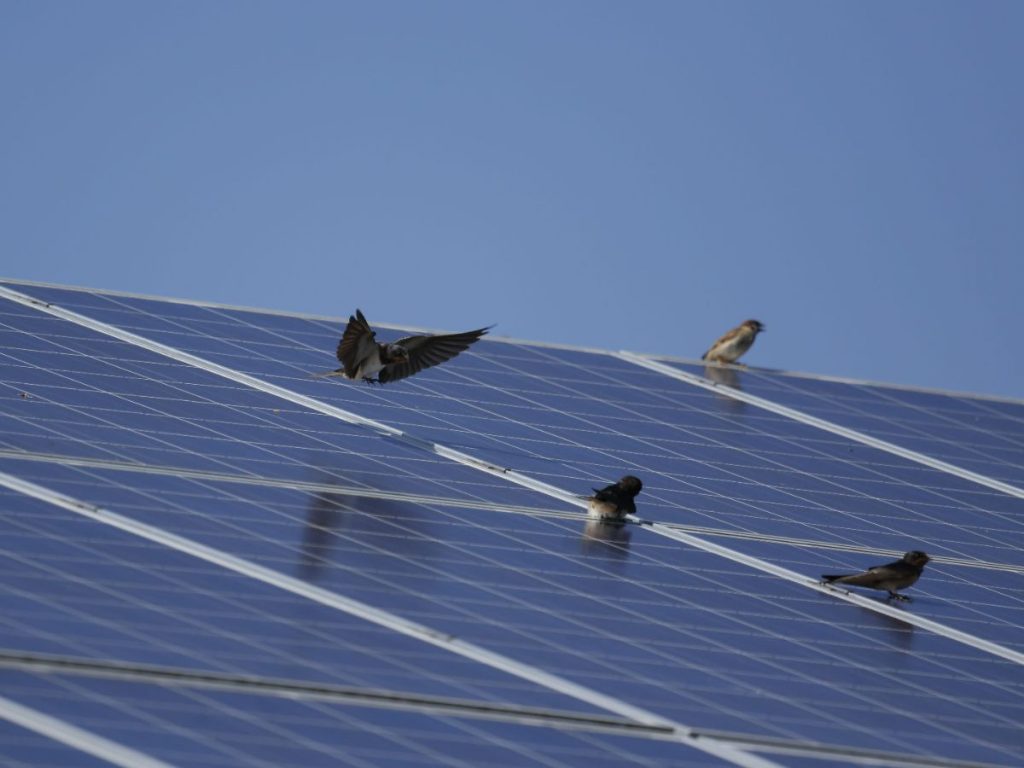Harnessing the sun’s energy with rooftop solar panels is an eco-friendly, forward-thinking move for any homeowner. But as the sun casts its golden rays onto these gleaming structures, there’s an unexpected guest that might be taking a keen interest in your green initiative.
Yes, we’re talking about pigeons under your solar panels.
Did you know that pigeons were used as messengers to carry crucial messages for thousands of years, and now… they just nest under your solar panels doing nothing (maybe even harming your investment)?
Pigeons, those ubiquitous city dwellers, have found that the space beneath solar panels offers the perfect shelter from the elements, leading to an avian invasion that many homeowners didn’t see coming.
Join us as we delve into the world of pigeon nesting under solar panels, exploring the challenges it presents and the solutions to keep our feathered friends at bay.
Why Do Pigeons Choose Your Solar Panels to Nest?
Pigeons, like many other creatures, are constantly seeking out spaces that provide shelter, safety, and an environment conducive for raising their young. Solar panels, particularly when mounted on rooftops, inadvertently offer several advantages to these birds:
Safety from Predators
Elevated positions, like rooftops, naturally protect pigeons from many ground-based predators, such as cats and dogs. The confined space beneath the panels adds an extra layer of protection, making it harder for larger birds of prey to access the nests.
Shelter from Elements
The space beneath solar panels provides a shield against rain, wind, and direct sunlight, creating a more controlled environment that’s ideal for nesting.
Warmth
Solar panels absorb sunlight and can retain heat, especially during colder months. This warmth can be attractive to pigeons seeking a cozy nesting spot.
Proximity to Food Sources
In urban environments where solar panels are common, there’s often an abundance of food sources for pigeons, whether it’s from waste bins, public feeding, or naturally occurring sources.
A Place Called Home
Once a pigeon pair finds a suitable nesting location, they tend to return to the same spot year after year. So, if a pair has successfully raised a brood beneath solar panels, it’s likely they’ll return in subsequent seasons.
Can Nesting Pigeons Damage Solar Panels?
Yes, nesting pigeons can cause damage or complications to solar panels in several ways:, for example:
Nesting Materials
Twigs, leaves, and other materials pigeons use to build their nests can accumulate beneath or around the solar panels. This can obstruct airflow, leading to increased heat, which might reduce the lifespan of the panels and also decrease their efficiency.
Wiring and Cables
Pigeons, especially fledglings or younger birds, might peck at and damage the wires and cables connected to the solar panels. This can lead to malfunctioning panels or the need for costly repairs.
Droppings
Pigeon droppings are acidic and can corrode the protective coatings and metals on solar panels over time. Additionally, accumulated droppings can block sunlight, reducing the efficiency of the panels which affect your bottom line.
You can learn more about how to clean bird poop off solar panels.
Decreased Ventilation
Pigeons nesting beneath solar panels can obstruct the necessary ventilation, causing the panels to overheat. Overheating can reduce the efficiency of the panels and possibly shorten their lifespan.
Moisture Accumulation
The presence of nests can trap moisture, which, over time, may lead to mold growth or even corrosion of the panel’s structure or support mechanisms.
Noise and Disturbance
While not a direct damage to the solar panels, the cooing and activity of pigeons can be a source of disturbance for some homeowners.
Potential Fire Hazard
In rare cases, the combination of dry nesting materials and electrical components can pose a fire risk.
Can Birds Nesting Under Solar Panels Cause Fires?
Birds nesting under solar panels can pose a fire risk, though such incidents are relatively rare. The nests, made of dry and combustible materials like twigs and leaves, can ignite if they come into contact with sparks or overheated equipment.
Damaged wiring, often caused by birds pecking at them, can lead to short circuits, producing sparks or localized hot spots that might ignite the dry nesting materials.
Additionally, nests can obstruct proper ventilation, causing heat buildup, and if combined with faulty installations or poor-quality components, the risk of fires increases. Regular inspection and bird-proofing of solar installations are crucial to ensure safety.
How To Pigeon Proof Your Solar Panels
Pigeon-proofing your solar panels is essential to ensure they remain efficient and undamaged.
Here are some tips to pigeon-proofing your solar panels:
#1. Inspection
Begin by assessing the area around and beneath your solar panels for existing nests, droppings, or any damage.
#2. Clean the Area
Safely remove any nests and droppings found during the inspection. Ensure you’re wearing protective gloves and a mask due to the corrosive nature of pigeon droppings.
#3. Hire a Professional Installation Service
If you’re unsure about the pigeon-proofing process, consider enlisting the services of a professional. This ensures the deterrents are applied correctly without causing damage or voiding warranties.
We do offer solar panel pigeon mesh installation service in Melbourne and the surrounding areas, so feel free to give us a call.
#4. Solar Panel Mesh or Netting
Get a UV-resistant solar panel mesh or netting designed for pigeon-proofing.
Securely attach the mesh around the solar panels’ perimeter, ensuring it’s tight.
The mesh openings should be appropriately sized to deter pigeons but still maintain airflow.
#5. Bird Spikes
Install these around the solar panel system’s perimeter. They effectively prevent pigeons from landing and nesting.
#6. Slide Guards
Place these smooth barriers at the edges of the panels to hinder pigeons from gaining a grip.
#7. Bird Wires
Set up taut wires around the panels. These make it uncomfortable for pigeons to land.
#8. Optical Gel Repellents
Apply these repellents around the panels. Birds perceive them as flames, which deters them from landing.
#9. Regular Maintenance and Inspection
Continually check your solar panels for bird activity or damage. Even with pigeon-proofing in place, periodic maintenance ensures the deterrents remain effective.
By following this structured approach, homeowners can ensure their solar panels are protected from pigeon-related issues, maintaining their efficiency and extending their service life.
#10. Annoy the Pigeons
Since birds are scared of sharks, you could hypothetically put a speaker next to your solar panels and play the song ‘Baby Shark’ day and night to annoy the pigeons and drive them crazy so they won’t stay. You know how it goes… Baby shark, doo doo doo doo doo doo… Hey, just kidding! Don’t do it. Give us a call today and we’ll install the solar panel bird proofing mesh for you.
How much does it cost to pigeon proofing solar panels?
The cost of pigeon-proofing solar panels is around $800 – $1,500 or more and primarily depends on factors like the size of the solar array, the chosen deterrent method, installation complexity, and regional labor rates and whether a clean-up is required. For an accurate estimate, please give us a call and let us know about your specific system requirements.

